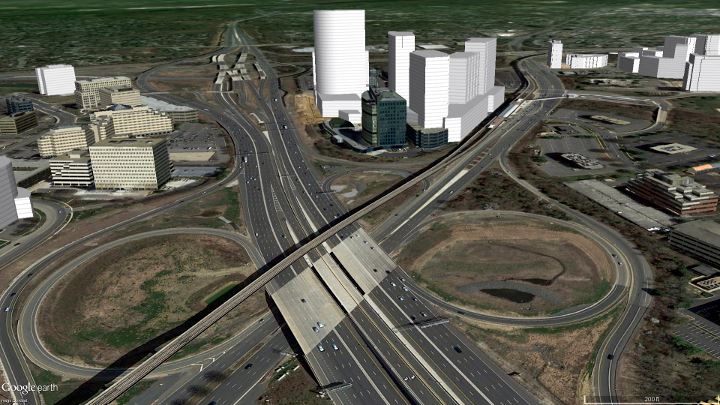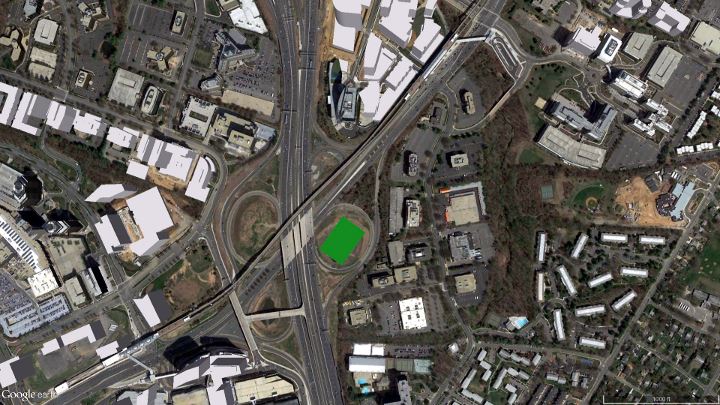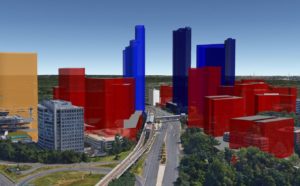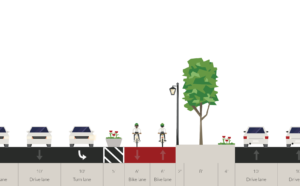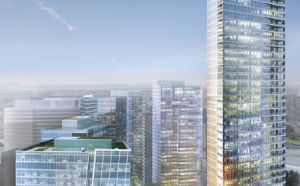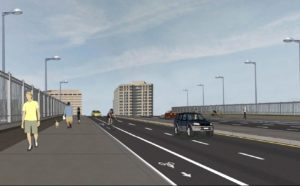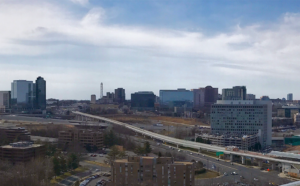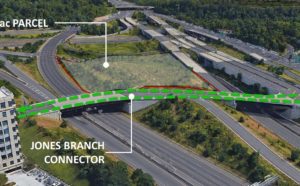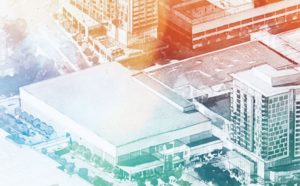The design of highway on-ramps and off-ramps have become prescriptive over the past six decades of transportation engineering with a set of a codes and requirements published by AASHTO (American Association of State Highway and Transportation Officials) and state DOTs. What has happened over that period of time is a conservative approach to land use for the purpose of “safety” which requires very specific geometric layouts, minimum radii, which result in massive swathes of land remaining fallow at the heart of these interchanges.
This is a serious problem for many communities. The highways that bisect our nation’s urban cores cause serious connectivity and walkability issues. Land under overpasses is often targeted for criminal activity and vandalism. With the conservative AASHTO requirements we’ve seen this exponentially worsened by dozens of acres of wasted land along side of the highways turning disconnected neighborhoods into abandoned no-man’s lands.
An obvious example is here in Tysons. The 495/Route 123 interchange is massive. The size of a single cloverleaf is larger than the entire campus for Capital One (the future home of millions of square feet of development). This space should be prime real estate, at the core of the city, and yet it is the most barren use. Sure it is also used for some storm water control for the highway, but this can also be replaced with more space sensitive storm water systems as well.
Just one example of what these could be converted to is public park space or recreational fields. The onramp at the southeast corner of the interchange is large enough not only to be home to a full sized regulation soccer field, but leaves enough room to create landscaping and walkway improvements, stormwater controls… heck you could fit a whole high-rise next to the soccer field if you wanted to.
Of course, we could have the soccer fields, the health promoting park lands and landscape, and have it paid for by private development opportunities like a near by high-rise if we could design our on ramps with other travel modes in mind. We’ll never want people crossing highway lanes of course, that is a given, but over the past 6 decades we have seen the no-man’s land grow from the highway itself to it’s connecting roadways. The new frontier is creating pseudo-highways that are wholly separate from the highway which is also inhabitable to pedestrians, i.e. stroads.
When we take back roads, and keep highways where they are meant to be we can reduce speeds, and return safe access to the core wasted spaces of these interchanges. When we do that we see great opportunity at the core of our communities that before were nothing more than over grown grass.

